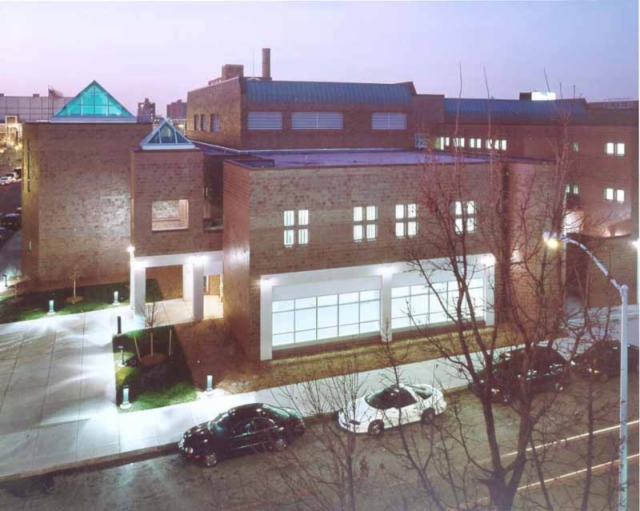
SERVICESArchitectural/Engineering
CONSTRUTION COST$39 million
START / COMPLETE1996 - 1999
SIZE198,000 sf, 188 beds
AWARDS"M" Award for Excellence in Masonry Design,
Masonry Institute of Michigan and AIA Michigan
|
The completion of the new Wayne County Juvenile Detention Facility marks the beginning of a new era in providing justice services to the people of Wayne County. Built on the former site of the old Detroit Receiving Hospital in what is now the Criminal Justice Area of Downtown Detroit, the new facility will replace the current detention facility located near I-75 and Forest.
The new two-level, three story, juvenile detention facility contains over 162,000 square feet of floor space plus an additional 36,000 square feet of covered parking. There are 188 beds, including an identified reserve capacity, for a net planned population of 158 beds. In addition to detention housing for boys and girls, there are facilities for a regimen of programs and services providing education, medical and mental health, counseling therapy and recreation.
The building is organized along an interior circulation spine or "street" on both the first and second floors of the facility. An organized plan locates first floor functions such as admissions, classification, public accommodations, hearing rooms, master control center, administration, housing support (laundry and food services), and building support along this "street" in a safe and secure environment. The central "street" leads to staff parking which is protected from weather by the second floor of the structure.
The second floor consists of mental health facilities, medical with infirmary, discipline unit, and contiguous two-level housing pods clustered in modules of 20 boys or girls. Also, classrooms, school administration, arts and crafts, media/computer center and gymnasium are along this "street" which allows staff to see one another and promotes a high level of staff and youth interaction in a highly secure facility. The living units provide individual bedrooms grouped around dayrooms that contain support facilities such as linen storage, showers, kitchenettes, counseling rooms and staff work stations. Dayroom activities include passive recreation games, television and educational support functions. Adjacent to the dayrooms are recreation areas which provide for year-round activities in natural light through the use of rooftop skylights.
|
